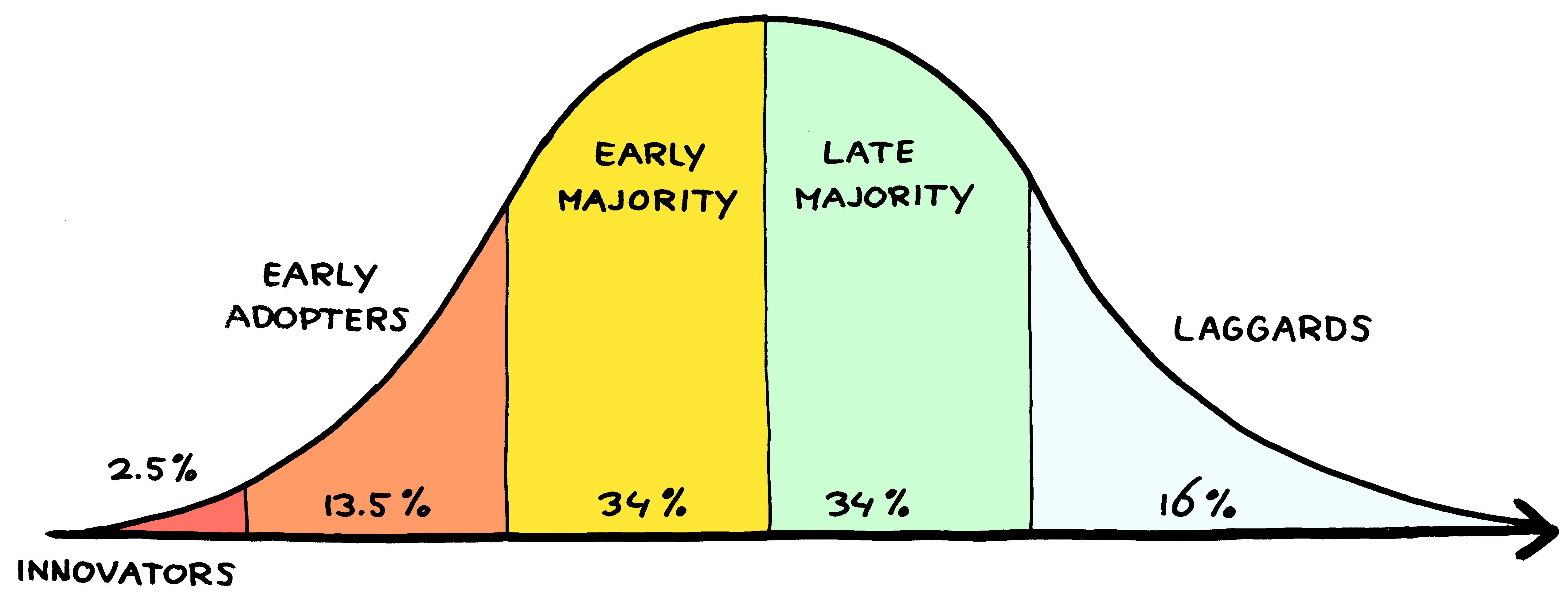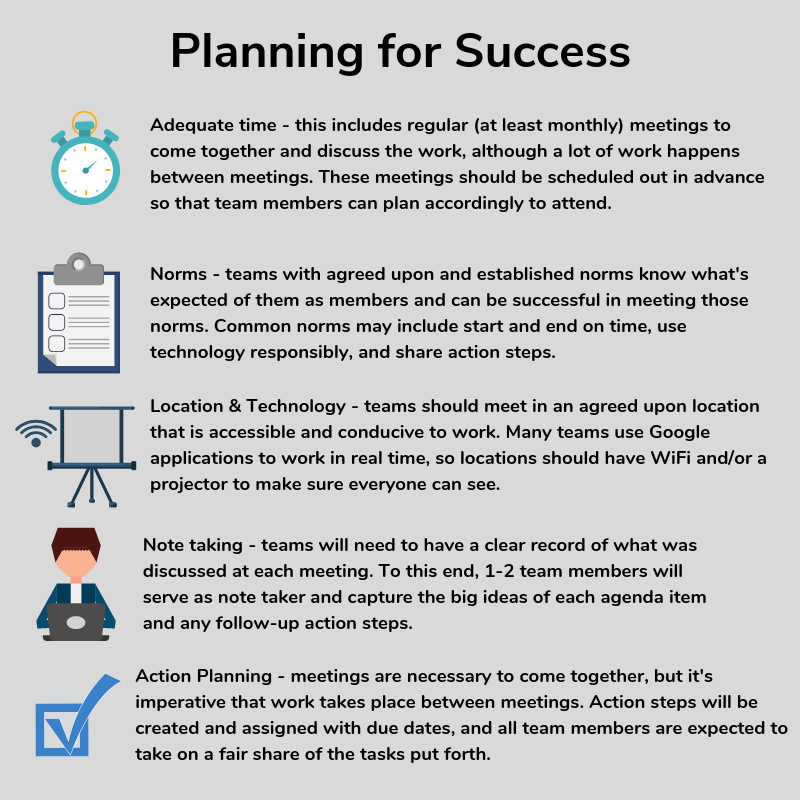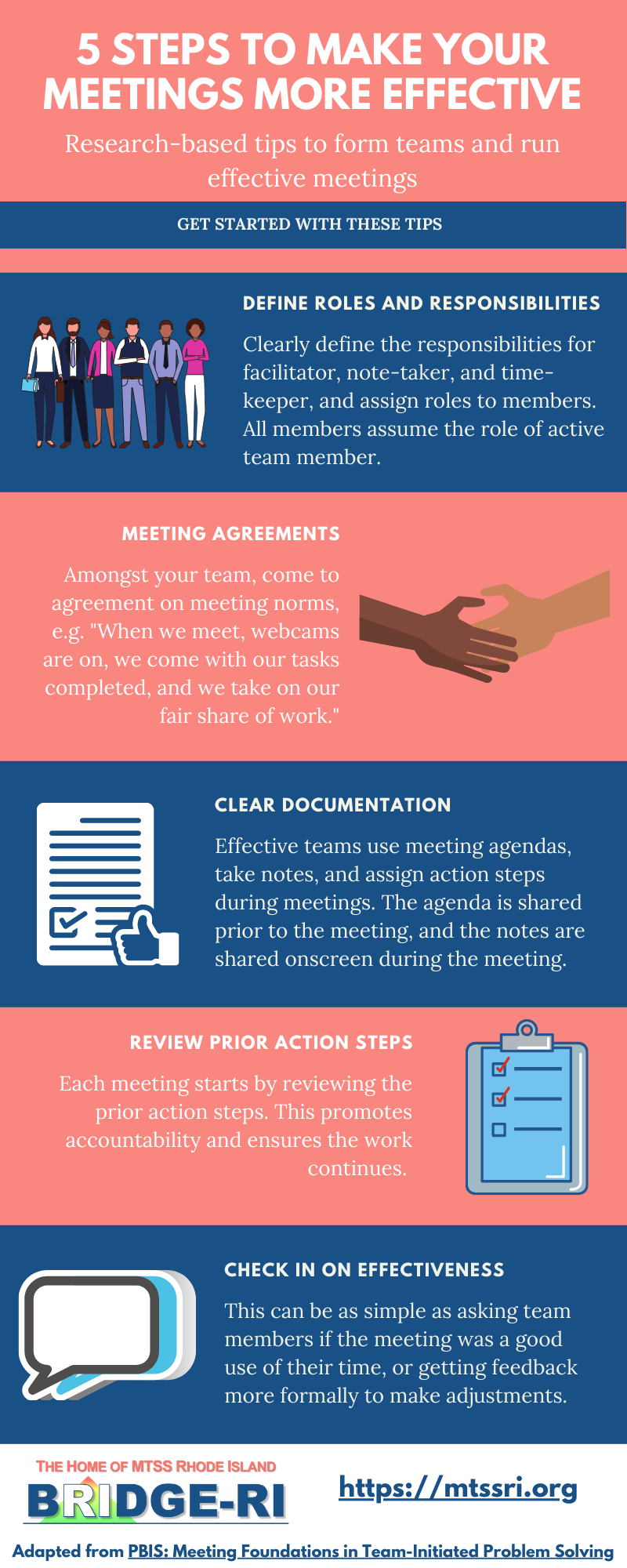Teams & Roles
Coming together is a beginning, staying together is progress, and working together is success.
Effective and efficient teams are a crucial component of successful MTSS implementation, and to that end, putting together the right team and setting it up for success is one of the first steps of this work.
Selecting Team Members
Selecting the right people to be on the team is of the utmost importance. When assembling the teams needed for MTSS implementation, the following must be considered:
| Representation The team should include members who bring a variety of lenses and perspectives. Those include general education, special education, cultural and linguistic considerations, roles, grade levels, and content areas to name a few. It is also important to consider who will provide the parent/family perspective and, at the secondary level, the student perspective. Additionally, it is required that a school administrator be on every team so that members feel empowered and supported in their decisions knowing the administrator is behind them. Size Forming a successful team can sometimes feel a little like Goldilocks. You want your team to be just right - not too big, and not too small. Your team should be large enough to include the right representation from your school, but not so big that it's impossible to align everyone's schedules for meetings and make decisions as a team. |
 |
|---|
Roles & Skill Sets
Successful teams assign their members specific roles (and usually include back-ups for when those team members are absent). Roles include facilitator, note-taker, data analyst, a time keeper if needed, and an administrator. Roles should be assigned to team members who show interest and an affinity for the skills needed to complete the tasks well.
In addition, team members may bring individual skill sets that are independent of the role they represent. It's important to consider that your team is composed of members who have expertise or skills in areas meet the needs of the students in your building.
Other Commitments
When considering team members, think about other commitments they may have. We have a tendency to over-stretch the most willing and capable individuals, but we don't want burnt out team members who may eventually have to scale back their efforts or leave the team entirely. Consider this carefully.
Comfort with Change
The diffusion of innovation theory, first put forth by Everett Rogers in 1962, identifies five categories of people who are adopting something new - a new practice, technology, etc. The innovators and the early adopters are the individuals who are leading the change. They are the first groups of people to say, "Let's do it!" You need some of those individuals on the team to lead the charge. But don't discount the next groups - the early and late majorities. They might be a little more reserved about change, but once you have them on board, they will be great at building consensus with other individuals in the building who might not quite be ready.

"FIGURE 15.5 Innovation Adoption Curve" by Jurgen Appelo is licensed under CC BY 2.0.
Planning for Success
Research shows that the efforts of an effective team can result in higher success with implementation - new implementation efforts were 80% effective over three years with a team (Fixsen, Blase, Timbers, & Wolf, 2001) vs. 14% effective over 17 years without a team (Balas & Boren, 2000). There is a substantial return on investment with an effective team, but just what makes a team successful? The practices listed below are critical factors in team success:

Text-only version of Planning for Success
MTSS Rhode Island will make sure schools and districts have the training and capacity to put teams with these requirements in place.
|
What do successful teams and meetings look like in a virtual setting? View and/or download the infographic 5 Steps to Make Your Meetings More Effective. |
 |
|---|
School and District Teams
Both participating schools and districts will need to create teams when undertaking MTSS implementation. These teams will ultimately both be working towards the same goal - streamlined implementation of a multi-tiered system of supports by consistent use of data to inform and guide problem solving efforts. The district and school teams, however, will look a little different.
School Teams
Schools will typically need two teams. The first is a team charged with school-wide improvement, meaning core instruction for behavior, academics, and social-emotional learning that all students receive. This team reviews school-wide data, such as screening scores, attendance, Office Discipline Referrals, and other school-wide measures of Tier 1 success. At this level, student names are not used, as the concern is: "How effective is what we're doing for all students?"
The second school-based team is focused on providing and intensifying interventions to those students who need additional support, such as a targeted group intervention or an individualized, intensive intervention. Teams tasked with improving Tiers 2 and 3 focus on providing evidence-based interventions for students with academic, behavioral, and social-emotional needs for whom Tier 1 is not sufficient. Like the Tier 1 team, this team also reviews data frequently to determine criteria for entry into and exit out of an intervention, progress monitor, and evaluate overall effectiveness of an intervention.
District Team
The district team comes together frequently to monitor and streamline MTSS implementation and think broadly about areas of focus for the district. The district team plays a key part in building consensus and commitment for MTSS implementation across the district, as well as promotes and supports scale up and sustainability. The district team also makes determinations about what should be considered a “cabinet “ level decision – one that the district team should make to ensure consistency across schools, such as what norms will be used for academic screening, as well as what is considered a “building” level decision – one that school teams and/or the administrator make, such as a building schedule.
This webinar with MTSS Rhode Island and the Rhode Island Association of School Principals (RIASP), recorded December 1, 2020, further discusses the importance of teams and roles within a multi-tiered system of supports framework.
